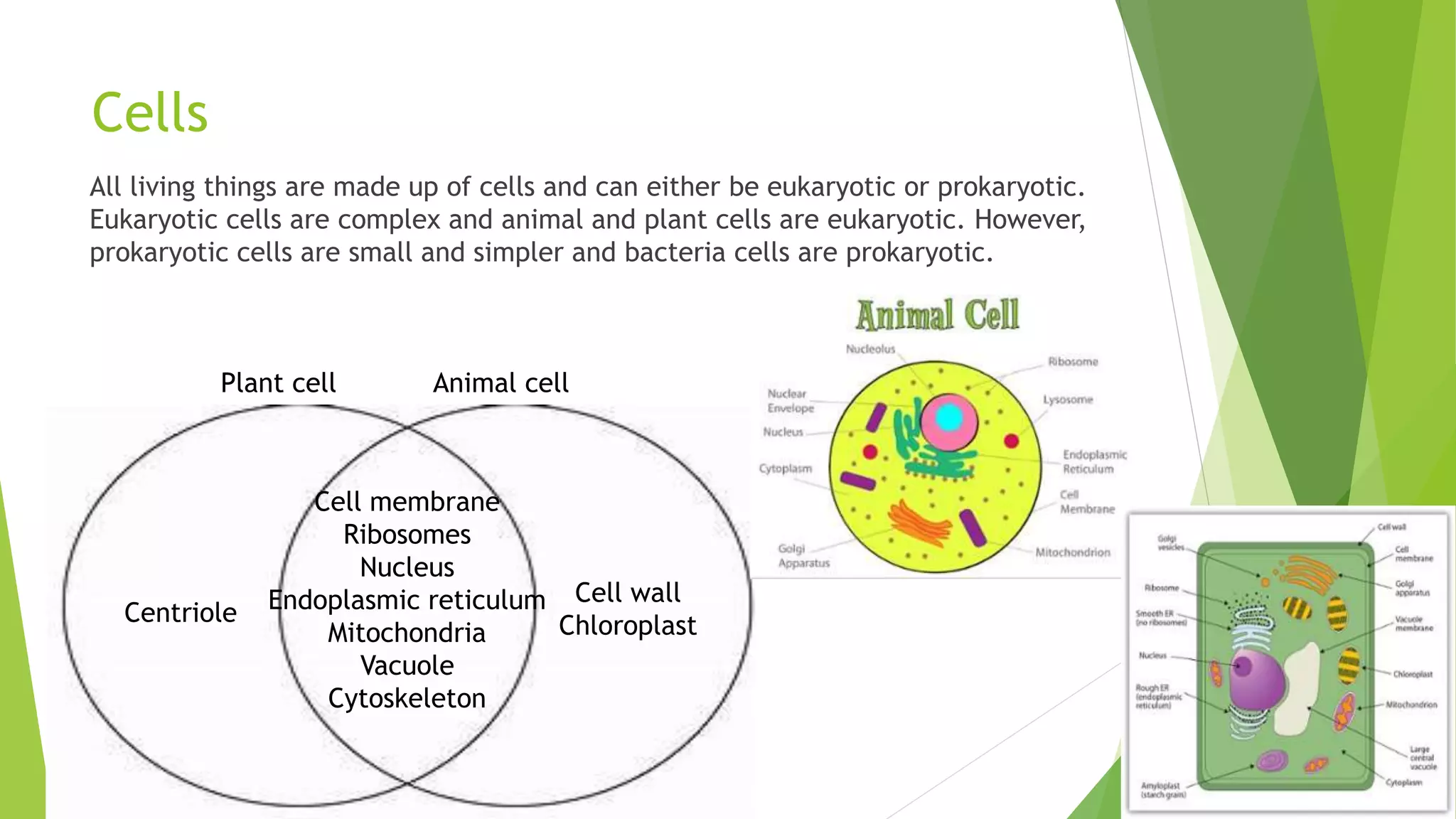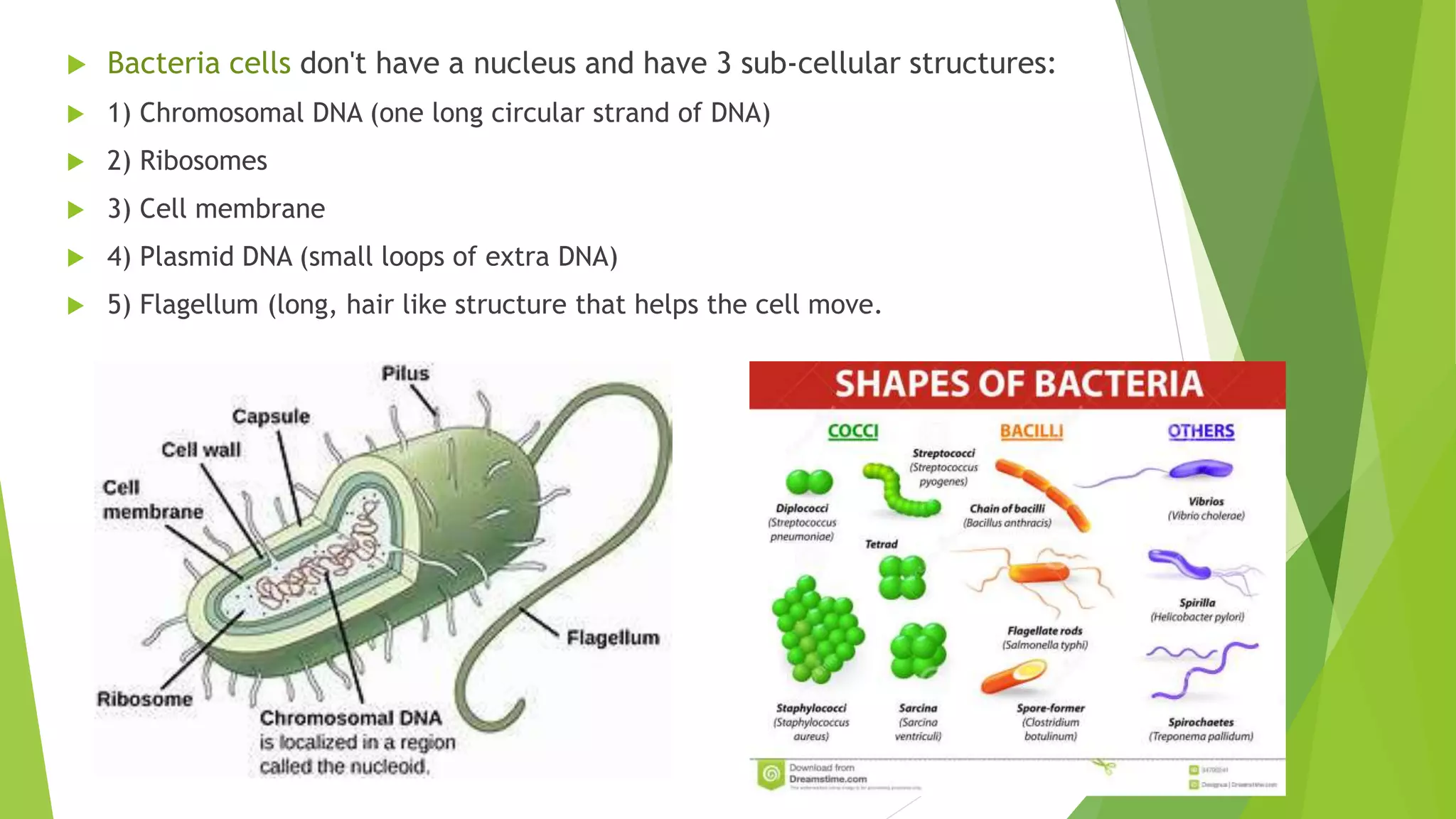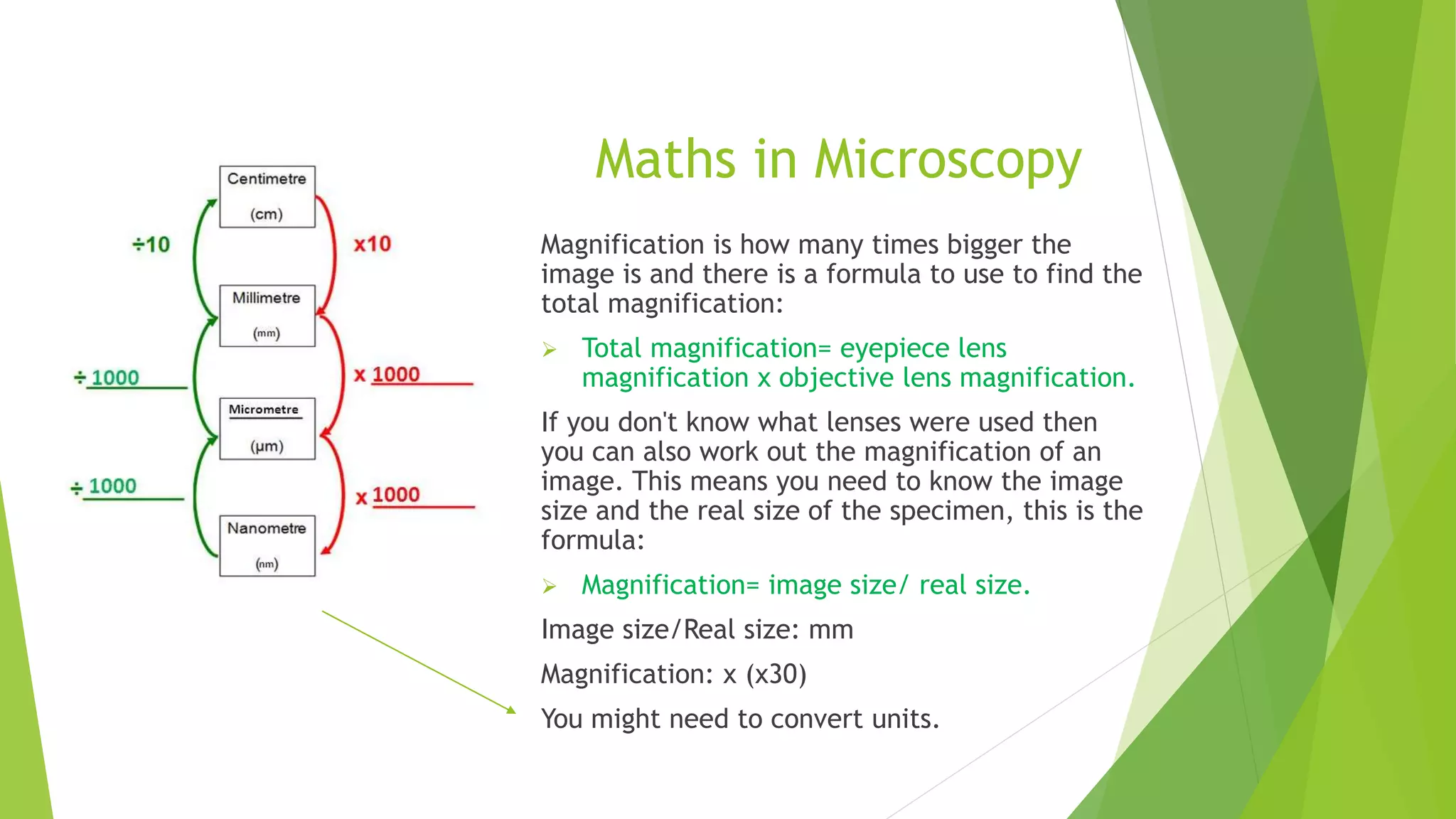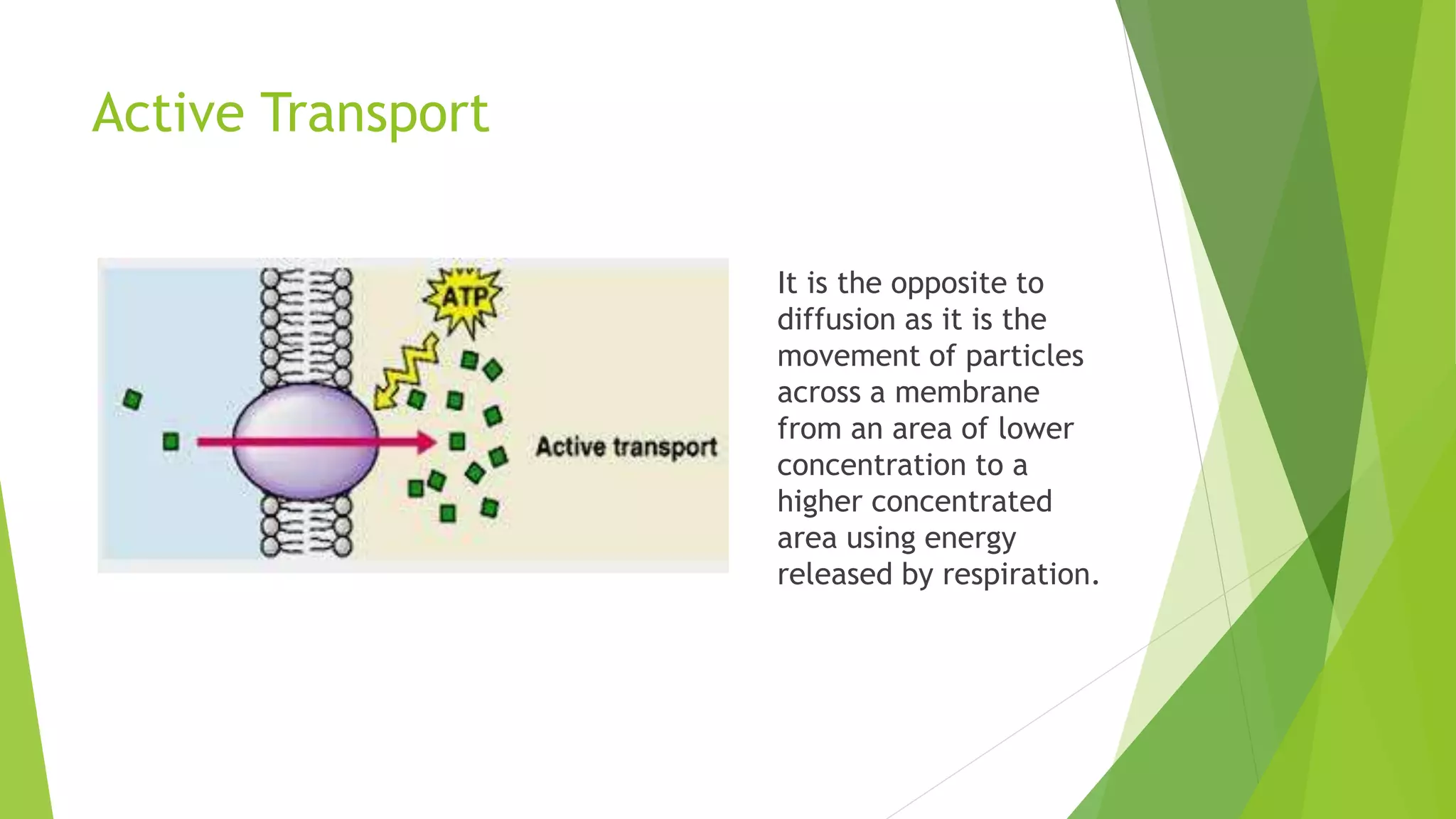The document covers key concepts in biology, focusing on the structure and function of cells, including eukaryotic and prokaryotic cells, and their specialized roles in multicellular organisms. It explains the use of microscopes for studying cells, the role of enzymes in biological reactions, and the processes of diffusion, osmosis, and active transport. Furthermore, it details factors that affect enzyme activity and provides mathematical formulas for calculating magnification and reaction rates.













